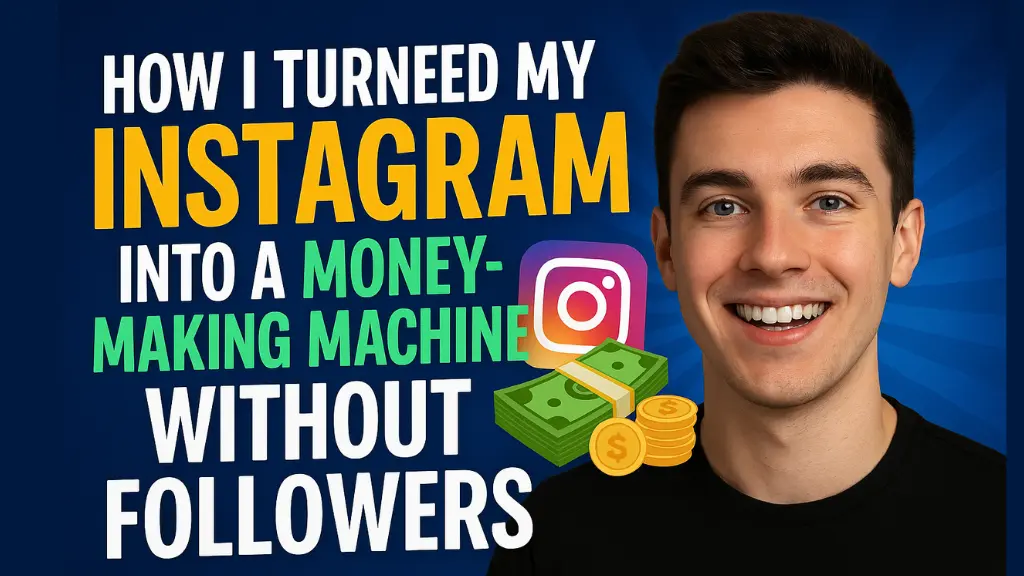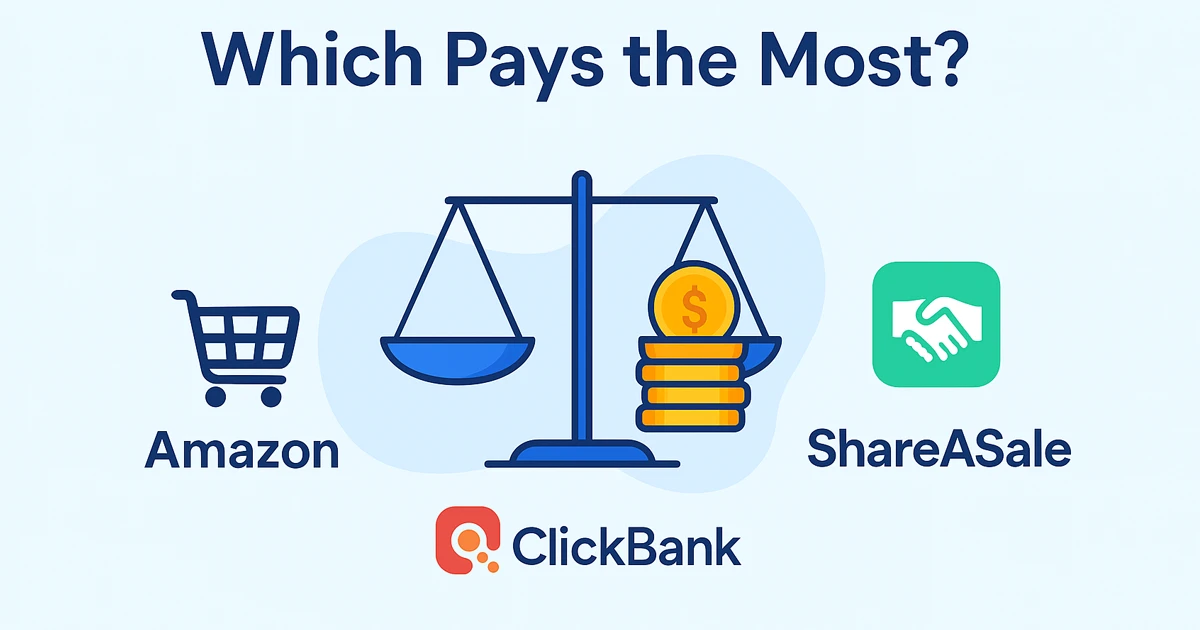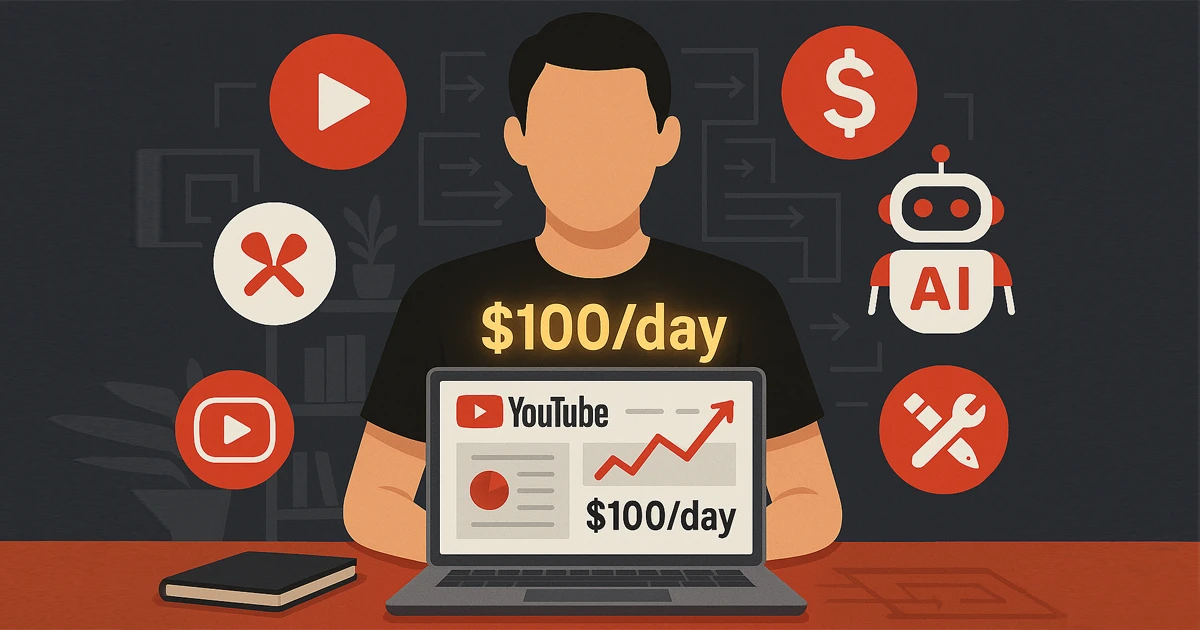
In a world obsessed with follower counts, viral posts, and clout, the idea of making money on Instagram without a massive following sounds like a pipe dream.
But I’m here to tell you it’s not only possible—it’s exactly what I did. Over the past two years, I transformed my Instagram account, starting with zero followers, into a consistent revenue stream that now generates over $5,000 a month.
And no, I didn’t rely on having thousands of followers or chasing viral fame. Instead, I used strategic methods, niche targeting, and a bit of hustle to monetize my account in ways most people overlook.
In this 3,000-word guide, I’ll walk you through the exact steps I took to turn my Instagram into a money-making machine, even with a small or nonexistent audience.
The Myth of Needing a Big Following
Before diving into the strategies, let’s debunk a myth: you don’t need a massive following to make money on Instagram.
The platform has over 2 billion monthly active users as of 2025, and businesses are spending billions on Instagram marketing annually.
While influencers with millions of followers can command high fees for sponsored posts, there’s a growing demand for micro-influencers, niche accounts, and even accounts with minimal followers but high engagement or unique value propositions.
The key isn’t the number of followers but the quality of your content, the audience you attract, and how you leverage Instagram’s tools to create revenue streams.
I started with a brand-new account, no connections, and no social media expertise. What I did have was a willingness to experiment and a clear plan to focus on value over vanity metrics.
Step 1: Choosing a Profitable Niche
The first step to monetizing Instagram without followers is picking the right niche. A niche is a specific topic or area of interest that defines your account’s content and attracts a targeted audience.
The mistake many people make is choosing a niche that’s too broad (e.g., “lifestyle”) or too saturated (e.g., fitness or travel). Instead, I focused on a hyper-specific niche with high monetization potential.
How I Chose My Niche
I started by researching industries with high demand for Instagram content but relatively low competition. I used tools like Google Trends, Amazon’s best-seller lists, and Instagram’s Explore page to identify trending topics.
After some digging, I settled on sustainable home gardening—a niche that was growing in popularity due to increased interest in eco-friendly living and urban farming.
Why sustainable home gardening? It’s specific enough to stand out but broad enough to attract an audience interested in related products like gardening tools, seeds, and eco-friendly home decor.
Plus, it aligned with my personal interest in plants, which made creating content enjoyable.
Tips for Choosing Your Niche
- Look for demand: Use Instagram’s search bar to see what hashtags are trending in your area of interest. For example, #UrbanGardening has millions of posts, indicating strong interest.
- Assess monetization potential: Check if brands in your niche are active on Instagram. Look for affiliate programs or products you can promote (e.g., gardening supplies, eco-friendly products).
- Align with your interests: You’ll be creating content consistently, so pick something you’re passionate about or willing to learn.
- Avoid oversaturation: Instead of “fitness,” try “postpartum yoga for busy moms” or “kettlebell workouts for beginners.”
Once I chose my niche, I set up my Instagram profile to reflect it. My username (@GreenThumbHaven), bio, and profile picture all screamed “sustainable gardening” to attract the right audience from day one.
Step 2: Building a Professional Profile (Even With Zero Followers)
Your Instagram profile is your digital storefront. Even without followers, a polished profile can attract opportunities. I spent time crafting a profile that looked professional and trustworthy, which was crucial for landing early partnerships.
Optimizing My Profile
- Username: I chose @GreenThumbHaven because it’s memorable, niche-specific, and brandable.
- Bio: My bio was clear and value-driven: “Helping you grow your own food 🌱 | Sustainable gardening tips | DM for collabs!” It included a call-to-action (CTA) to encourage engagement.
- Profile Picture: I used a high-quality image of a lush garden to visually communicate my niche.
- Highlights: I created story highlights for “Tips,” “Tutorials,” and “Products” to showcase my content, even when I had just a few posts.
Why This Matters
Brands and potential customers judge your credibility based on your profile. A professional-looking account with a clear niche signals that you’re serious, even if your follower count is low.
I also linked to a simple Linktree page in my bio, directing visitors to my blog (more on that later) and affiliate links.
Step 3: Creating High-Value Content Without an Audience
Content is the heart of Instagram monetization. Without followers, your content needs to be discoverable and valuable enough to attract organic engagement.
I focused on creating content that solved problems for my target audience—urban gardeners looking for sustainable, budget-friendly solutions.
Types of Content I Posted
- Educational Posts: Carousels with tips like “5 Ways to Compost in Small Spaces” or “How to Grow Herbs Indoors Year-Round.” These posts were designed to be saved and shared, increasing their reach.
- Reels: Short, engaging videos showcasing quick gardening hacks (e.g., regrowing green onions from scraps). Reels are Instagram’s most discoverable format, and I saw my first 1,000 views within days of posting.
- Stories: I used stories to share behind-the-scenes content, like setting up my own balcony garden, to build authenticity Scrappy. I also used polls and questions to engage early followers.
- Infographics: Simple visuals explaining concepts like soil pH or companion planting. These were shareable and added value.
Content Creation Tips
- Focus on quality: Use good lighting, clear text, and consistent branding (e.g., a cohesive color scheme).
- Leverage hashtags: I used niche-specific hashtags like #UrbanGardening, #SustainableLiving, and #GrowYourOwnFood to increase discoverability. Research hashtags with 10,000–500,000 posts for optimal reach.
- Engage with trends: I jumped on trending audio for Reels and participated in challenges relevant to my niche.
- Post consistently: I aimed for 3–5 posts per week and daily stories to stay active.
By focusing on value-driven content, my posts started appearing on the Explore page, attracting organic followers who were genuinely interested in my niche.
Within three months, I had 500 highly engaged followers—small, but enough to start monetizing.
Step 4: Monetization Strategies That Don’t Rely on Followers
Here’s where the magic happened. I didn’t wait for a big following to start making money. Instead, I used these strategies to generate income from day one.
1. Affiliate Marketing
Affiliate marketing involves promoting products and earning a commission for each sale made through your links. I signed up for affiliate programs through platforms like Amazon Associates, ShareASale, and gardening-specific brands offering eco-friendly products (e.g., compost bins, seed kits).
- How I Did It: I created content around products I genuinely used, like a “Top 10 Tools for Urban Gardeners” carousel, embedding affiliate links in my Linktree. I also wrote detailed captions explaining why I recommended each product, building trust.
- Results: My first month brought in $150 from affiliate sales, mostly from seed kits and gardening tools. By month six, this grew to $1,000+ as my content reached more people.
Tip: Disclose affiliate links transparently (e.g., “This post contains affiliate links”) to comply with regulations and build trust.
2. Sponsored Content for Small Brands
Even with a small following, I landed sponsored posts by pitching to local and niche brands. Small businesses, like local nurseries or eco-friendly startups, care more about targeted engagement than follower count.
- How I Did It: I created a media kit (a simple PDF showcasing my niche, engagement rate, and content examples) and DM’d brands offering to create Reels or posts featuring their products. My first deal was with a local seed company for $100 per post.
- Results: By month four, I was landing 1–2 sponsored posts per month, earning $100–$300 each. These deals grew as my engagement rate (likes/comments per post) stayed high at 8–10%.
Tip: Focus on brands aligned with your niche and offer value (e.g., high-quality photos or videos) to stand out.
3. Selling Digital Products
I created digital products to sell directly to my audience, leveraging my expertise in sustainable gardening.
- What I Sold: A $15 eBook called “The Urban Gardener’s Guide to Zero-Waste Growing” and a $10 printable gardening planner. I used Canva to design these and Gumroad to sell them.
- How I Promoted Them: I posted teasers (e.g., a carousel with one tip from the eBook) and added links to my Linktree. Stories with swipe-up links also drove sales.
- Results: My eBook sold 50 copies in the first month, generating $750. The planner added another $200. These products became evergreen income sources.
Tip: Start with low-priced products ($5–$20) to attract buyers, then upsell higher-value items like courses later.
4. Driving Traffic to a Blog
I started a blog (using WordPress, costing ~$100/year for hosting) to complement my Instagram. The blog featured in-depth guides (e.g., “How to Build a Vertical Garden for $50”) with affiliate links and Google AdSense ads.
- How I Did It: I linked blog posts in my Instagram bio and stories, driving traffic from my small but engaged audience. Each post included affiliate links and SEO-optimized keywords to rank on Google.
- Results: By month six, my blog was getting 2,000 monthly visitors, earning $500 from ads and $300 from affiliate links. Instagram drove 30% of this traffic.
Tip: Write evergreen content that solves specific problems, and use Instagram to funnel readers to your blog.
Step 5: Growing Engagement (Not Just Followers)
While followers weren’t my focus, engagement was critical. High engagement (likes, comments, shares, saves) signals to Instagram’s algorithm that your content is valuable, boosting its reach. It also attracts brands and buyers.
How I Boosted Engagement
- Responded to comments/DMs: I replied to every comment and DM within 24 hours to build community.
- Used CTAs: Every post ended with a question (e.g., “What’s your favorite herb to grow?”) to spark conversation.
- Collaborated with others: I did “collab posts” with other small gardening accounts, cross-promoting to their audiences.
- Analyzed insights: Instagram’s analytics showed me which posts performed best (Reels and carousels), so I doubled down on those formats.
By month three, my posts averaged 50–100 likes and 10–20 comments, despite having only 500 followers. This 10–20% engagement rate was higher than many accounts with 10,000+ followers, making my account attractive to brands.
Step 6: Scaling Up Without Chasing Followers
As my income grew, I focused on scaling my strategies rather than obsessing over follower count.
- Expanded affiliate partnerships: I joined more programs, like eco-friendly home decor brands, increasing my commission potential.
- Created a course: I launched a $97 online course, “Sustainable Gardening 101,” promoted via Instagram. It sold 20 spots in the first month, adding $1,940 to my income.
- Negotiated higher sponsorship rates: As my engagement grew, I charged $500+ per sponsored post by year two.
- Diversified income: I added a Patreon for exclusive gardening tips, earning $200/month from 10 patrons.
By year two, my Instagram was generating $5,000–$6,000/month through these streams, with only 2,000 followers. The key was focusing on niche expertise, high engagement, and multiple revenue streams.
Common Mistakes to Avoid
- Chasing followers over engagement: Buying followers or posting generic content dilutes your niche and hurts engagement.
- Ignoring analytics: Use Instagram Insights to see what works and refine your strategy.
- Overposting: Posting too often (e.g., 10 posts/week) can overwhelm your audience and lower engagement.
- Neglecting compliance: Always disclose sponsored posts and affiliate links to stay compliant with FTC guidelines.
Tools and Resources I Used
- Canva: For creating professional graphics, eBooks, and printables (~$120/year).
- Linktree: Free tool for adding multiple links to your bio.
- Gumroad: For selling digital products (free to start, small transaction fees).
- WordPress: For blogging (~$100/year for hosting).
- Later or Planoly: For scheduling posts (free plans available).
Final Thoughts
Turning my Instagram into a money-making machine without followers wasn’t about luck or going viral. It was about choosing a profitable niche, creating high-value content, and leveraging multiple monetization strategies from day one.
By focusing on engagement and value over vanity metrics, I built a sustainable income stream that continues to grow.
You don’t need a million followers to make money on Instagram—you need a plan, consistency, and a willingness to experiment.
If you’re ready to start, pick a niche today, optimize your profile, and create one piece of content that solves a problem for your audience. The first dollar you earn will prove it’s possible.







[…] Now let’s get into the exact blogging strategy that will make your blog a money-making machine. […]
[…] short guides on Instagram or YouTube Shorts like “5 Free Sites to Learn […]
[…] isn’t just static—it’s dynamic. Create short videos, logo reveals, Instagram stories, or Twitch […]
[…] planning, publishing, and analyzing content across major platforms. It supports integrations with Instagram, TikTok, LinkedIn, Threads, Bluesky, YouTube, Pinterest, Google Business Profile (GBP), and […]
[…] WP Social is a comprehensive social media plugin that enables seamless sharing, login, and engagement features on WordPress sites. It supports over 20 social platforms, including Facebook, Twitter, LinkedIn, and Instagram. […]